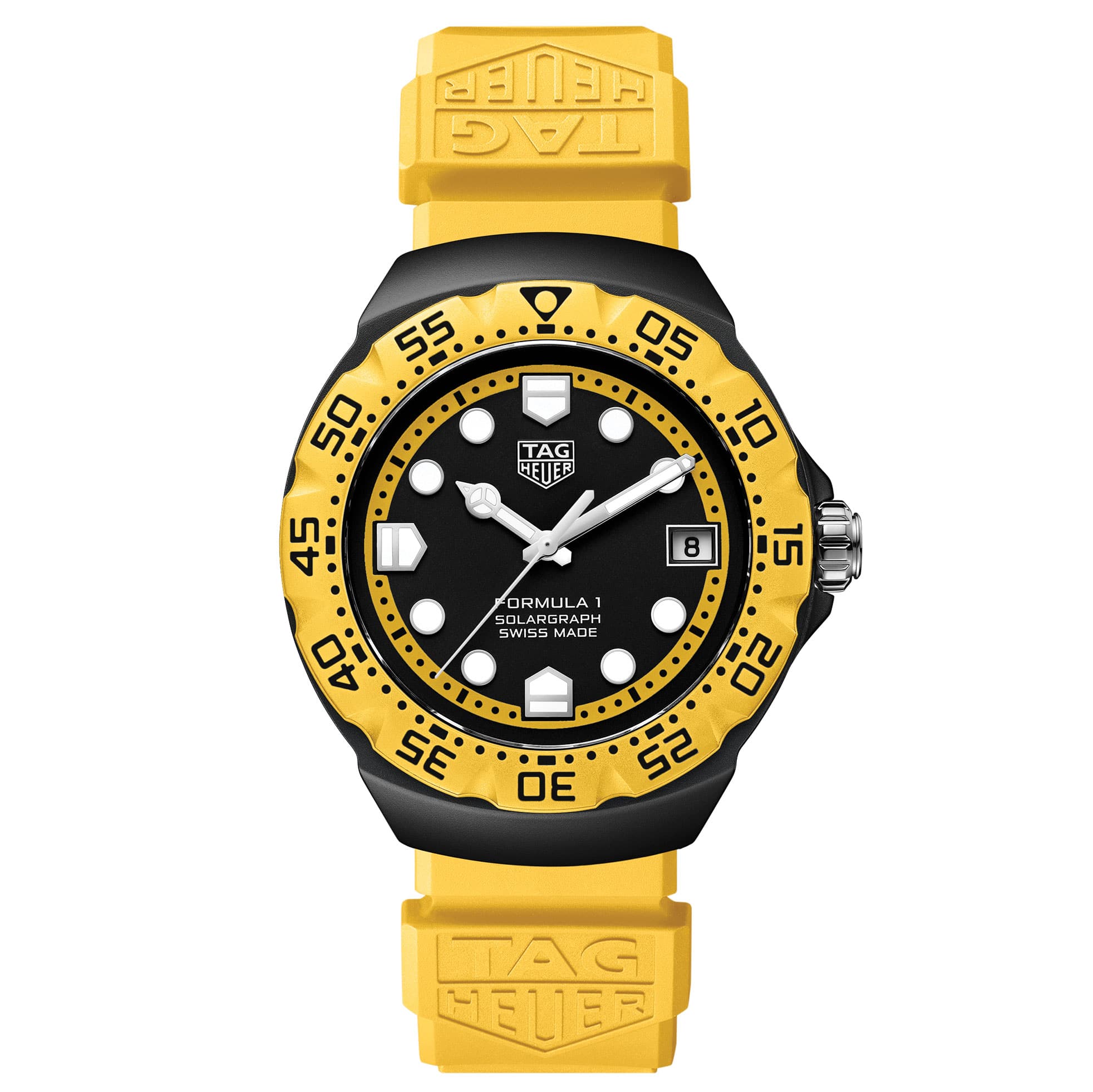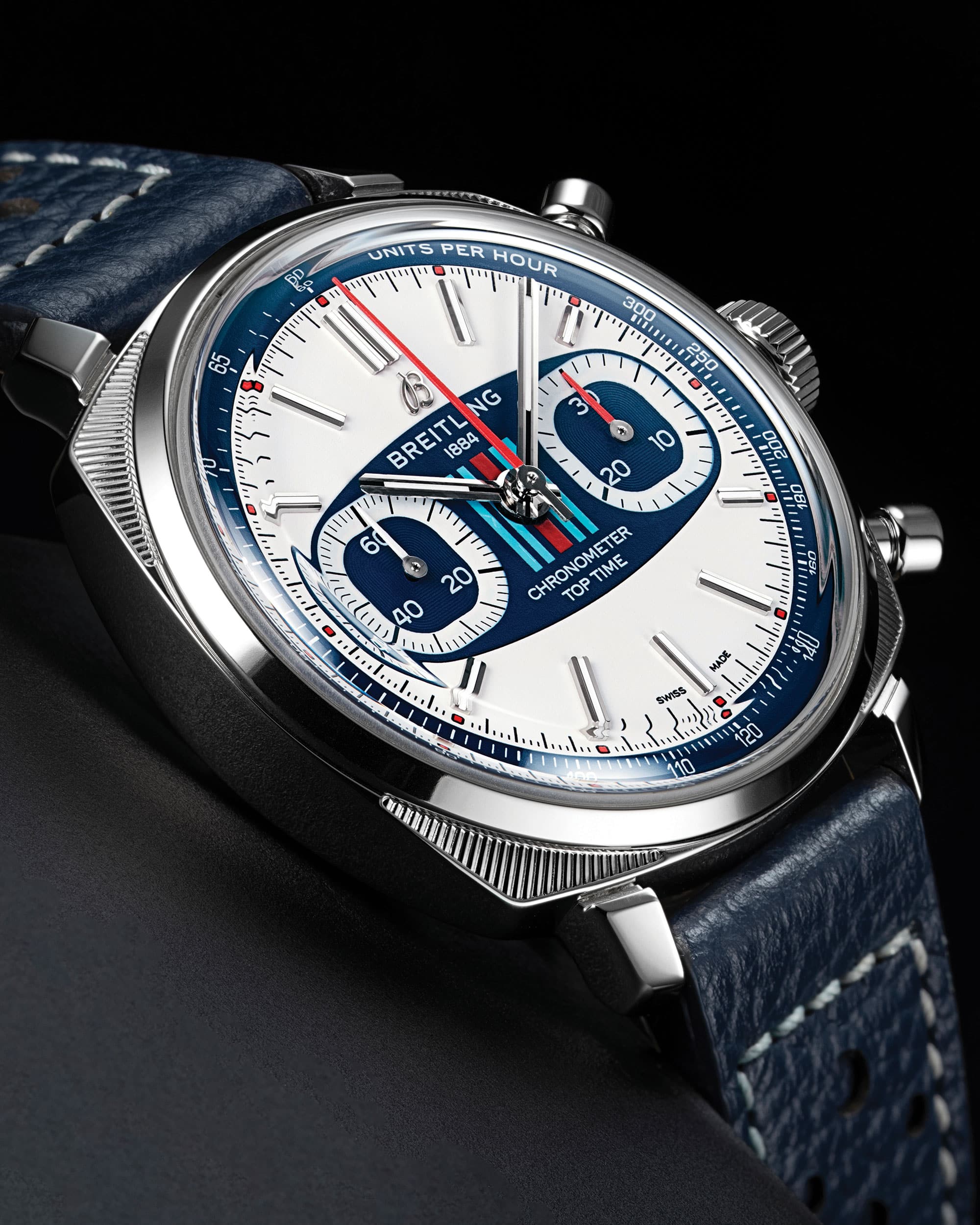TAG Heuer revives Formula 1 watch
The Formula 1 watch is one of TAG Heuer’s favourite designs. Now it has made a long-awaited return to the watchmaker’s range

Nine different colour schemes of the new Formula 1 are available; six are limited editions
Twenty twenty-five is a renaissance year for TAG Heuer. With parent company LVMH becoming the main sponsor of Formula 1, the driver-orientated watchmaker reprises the role of official timekeeper it held first from 1974-79 and again from 1992-2003.
The job puts the brand front and centre before a new generation of race fans who represent its target demographic – and it’s tempting them by releasing a slew of new, car-orientated models throughout the season.
In pole position is a revamp of a watch that was once one of its most successful and affordable designs: the Formula 1. It’s difficult to imagine being able to call a product Formula 1 now – but when TAG Heuer named it in 1986 (just after it was acquired by McLaren’s then engine supplier Techniques d’Avant Garde) no questions were asked.
The original was an inexpensive, quartz-powered effort in a 35mm steel and plastic case. It was the first watch to wear the now well-recognised TAG Heuer logo – and it sold by the truck-load before being discontinued in 2000.
When LVMH’s backing of F1 was being finalised last spring, TAG Heuer joined forces with US lifestyle brand Kith to launch a limited-edition series based on the old Formula 1 model following extensive appeals from enthusiasts to bring back the watch. True to the original’s 35mm diameter, it looked toy-like on the wrists of some of the men who bought it; this new iteration has a more of-the-moment 38mm.

The watch has been considerably upgraded in other areas, too, notably with a choice of cases in sandblasted steel, DLC-treated steel or a polymer-based material called TH-Polylight.
The dials, inset, have luminous markings made from applied Super-Luminova, there’s a bi-directional timing bezel that emits a satisfying ‘click’ and the watches can be had on a choice of two different rubber straps or a steel bracelet.
What’s really different about this Formula 1 is the use of TAG Heuer’s Solargraph movement which, instead of being powered by a conventional, disposable battery, uses one that has its energy reserve topped-up by light. If the battery has been allowed to run down, exposing the watch to the sun for 10 seconds will be sufficient to get it running and, after 10 minutes, there will be enough power to last a day. A fully charged battery will keep it ticking in the dark for up to 10 months and should last for at least 15 years.
TAG Heuer Formula 1 Solargraph, from £1550. tagheuer.com

The Black Forest watch and clockmaker Junghans will mark its 165th anniversary next year – but it could have disappeared had it not been for automotive spring-manufacturing tycoon Dr Hans-Jochem Steim who brought it back from the brink in 2007. Steim is a car collector so it’s no surprise that Junghans often launches driver’s watches, such as this retro 1972 Competition. The 45mm ovoid case has a curved back for a snug fit, and the crown and chronograph pushers are at the top for ease of use when behind the wheel.
Junghans 1972 Competition, £2590. junghans.de

With the state of the world, isn’t it time to say, “Comeback ’70s, all is forgiven?” And what could be more redolent of that once-misunderstood decade than the blue and red stripes of the Martini logo that signified the drink they called ‘the right one’? The livery became synonymous with racing, notably through Martini’s backing of the Porsche and Lancia teams. Now Breitling has struck a deal to use the colours on this special edition of its Top Time driver’s chronograph. Just 750 examples of the 38mm watch will be available.
Breitling Top Time Martini Racing, £5950. breitling.com
